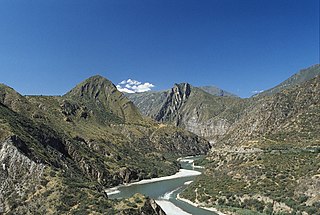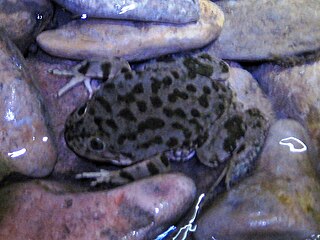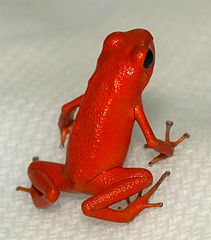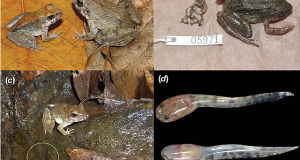The discovery of a new frog is always an exciting event, but the species revealed in this month’s issue of Zoo Keys is especially so. The colorful, entirely-aquatic Telmatobius ventriflavum was found in a small stream along a major highway 3,900 feet up in the Peruvian Andes. It is related to a unique group of frogs, the best known being the bizarre, “push-up performing” Lake Titicaca Frog (Telmatobius culeus). I was fascinated by the huge, baggy-skinned Lake Titicaca Frogs resident at the Bronx Zoo (the only ones in captivity) as a child – and due to their 30 year lifespans, I was lucky enough to work with those same individuals once I began my zoo-keeping career!
(Please see the article linked below for more on this amazing frog). The Lake Titicaca Frog’s newly-discovered relative promises to be just as interesting – and, it seems, is similarly threatened with extinction.
A Strange Frog in a Harsh Habitat
The new found frog sports the odd (some say “un-nerving”) upwardly-directed eyes typical of the other 62 members of the genus Telmatobius (similar, in my mind, to those of the more familiar Buddget’s Frog) and a beautiful, bright yellow to orange abdomen.

Uploaded to Wikipedia Commons by Torox
The only known population occupies a narrow stream of the Huaytara River, located in a valley on the Pacific slope of the Peruvian Andes. Herpetologists were surprised by its discovery because the site is near a major highway, and in a region that has been well-studied. The frog’s bright coloration might also have been expected to draw attention. Furthermore, a completely aquatic frog was not expected in this habitat – a dry, shrub-studded alpine grassland known as the Puna. The region receives a bit of rain from January to March, after which it remains bone-dry, and it has few resident amphibians.
Threats: Chytrid, Dams and Isolation
Because the stream in which T. ventriflavum lives is separated from other suitable habitat by desert-like grasslands, the species is assumed to be endemic to the immediate area. The stream has dammed, but it is not known if this negatively affects the population (but it’s a pretty safe bet that it does!).

Uploaded to Wikipedia Commons by Joshua Stone
Unfortunately, some of the frogs and tadpoles that have been examined were found to harbor Chytrid fungus, which has been responsible for scores of amphibian extinctions worldwide. So far, nothing is known of the fungus’ impact on the population, but herpetologists are not optimistic. In Ecuador, 3 related species have been wiped out by chytridiomycosis, the disease associated with this fungus.
As T. ventriflavum is already at risk due to its tiny range and the damming of its home stream, careful study of the population, especially as regards Chytrid infection, is being considered.
Further Reading
Lake Titicaca Frog Conservation
Original Article Describing the New Aquatic Frog
 That Reptile Blog – Reptile, Amphibian and Exotic Pet Care and Information
That Reptile Blog – Reptile, Amphibian and Exotic Pet Care and Information



